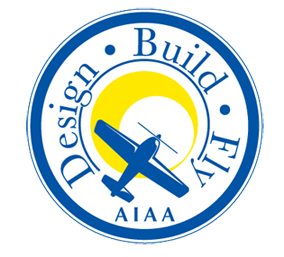Design/Build/Fly, or DBF, is a radio-controlled aircraft competition sponsored by the American Institute of Aeronautics and Astronautics (AIAA), Cessna Aircraft Company, and Raytheon Missile Systems. The competition is intended to challenge the AIAA student branches of each university to design, document, build, and fly a remote controlled airplane that can complete specific ground and flight missions. Additionally, the teams are required to submit a comprehensive design report detailing the most important aspects of their designs. The overall score will be computed from the design report, the total mission score and the rated aircraft cost. The latter is a variable used to define the complexity of the aircraft design.
2016 DBF Contest
The objective for the 2016 contest is to build two aircraft. A Production Aircraft (PA) and a Manufacturing Support Aircraft (MSA). The goal is to minimize the cost required to transport the sub-assemblies from their Manufacturing Location to the central Final Assembly location. This can be compared with an Airbus Beluga (Manufacturing Support Aircraft) transporting sub-assemblies of an Airbus A320. In addition the Production Aircraft will have to carry a payload in the form of a 32 oz Gatorade bottle.
Every year, changes are made to the contest in the form of new rules and missions, but this year another important change is the new airport where the fly-off will take place: Cessna Field in Wichita, Kansas! An interesting place because of the notorious gusting winds, which may have a big influence on small UAVs like the ones the team is working on. Of course, this will be taken into account during the design process. Another change is the demand to deliver a proposal in which the team presents its conceptual design. A satisfying proposal is required to be allowed to stay in the contest.
The fly-off will take place from 15 till 17 April 2016 and consists this year out of three missions and one bonus mission. The first mission is the MSA Arrival Flight, in which the MSA will fly three laps without payload which simulates flights from the central Final Assembly location to the Manufacturing Locations. The second mission is the MSA Delivery Flight, in which the MSA will transport the several sub-assemblies to the Final Assembly location. The third mission is the Production Aircraft Flight, in which the PA will transport a 32 oz Gatorade bottle during a flight of three laps. The Bonus Mission takes place between the second and the third mission. The goal is to assemble the PA and install the Gatorade bottle within two minutes and pass the wing tip lift test.
2015 DBF Contest
The 19th contest was opened on 15 October 2014. From this date, the teams could subscribe for the contest for which the number of entries is limited to 100 teams. The competition rules change every year and describe general aircraft requirements, safety requirements, scoring calculation and the missions during the fly-off.
The fly-off took place on 10 to 12 April 2015 at the TIMPA airfield in Tucson. During the fly-off every team had to perform three flight missions and one ground mission. The first flight mission was a ferry flight, which meant that the aircraft without any payload had to fly as many laps as possible in four minutes. During the second flight mission, the aircraft had to fly three laps with a payload inside the aircraft. After the second flight mission, the ground mission had to be performed, where the payload of the second flight mission had to be unloaded and the payload for the third flight mission had to be loaded by the ground crew as fast as possible. In the third flight mission, the aircraft had to fly as many laps as possible with several balls as payload. After every lap flown, the aircraft had to drop a ball in the drop zone.
Besides the missions at the fly-off, the team’s performance was also rated on the design report and the Rated Aircraft Cost, which is a variable used to define the complexity of the design.



